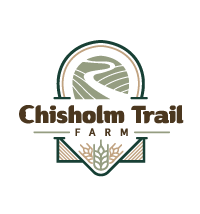One of our greatest joys is raising ancient grains. These grains have so much significance in history and we get to be a part of it! The oldest ancient grain is Einkorn, pronounced in'korn. This ancient grain, truly is ancient. It dates back as far as 12,000 years ago. It has been said to be found in Egyptian tombs. The Hebrew Bible discusses "chittum". Even though we are not certain what chittum is, it is believed to be einkorn. To this day, the seed we plant is the same seed that was planted thousands and thousands of years ago. This seed has not been altered or modernized, thank goodness. The difference with this ancient grain is that the hull (the husk that the seed sits in) does not get removed when we combine it. We have an extra step that we have to go through, we have to remove the hull before we can clean and package it. At this time, the closest facility to us is two hours one way. This is why we are working on getting set up to be able to remove the hulls ourselves.
First we will discuss why growing Einkorn benefits us, as a farm. There is a resilience and adaptability with this crop. Einkorn is highly resistant to dry conditions, which makes it excellent in drought conditions. It also has a natural resistance to multiple common wheat diseases, reducing the need for chemical treatments. Modern wheat lacks the genetic diversity that is essential for adaptation to emerging threats such as a changing environment, pests and disease (https://www.world-grain.com/articles/16555-researchers-looking-to-ancient-wheat-for-disease-resistant-genes). Einkorn requires less fertilizer compared to modern wheat varieties, which lowers the cost and environmental impact of farming. Even better, its nature resistance to pests and diseases reduces the need for pesticides. The root structure of Einkorn helps in improving soil structure and fertility. By using this in our crop rotation system, Einkorn helps in maintaining and improving our soil health. Einkorn aids in preserving genetic diversity within the cereal crops, which is an absolute must for food security. All of these are a win for our farm simply because we plant Einkorn.
Second, the nutritional benefits of Einkorn for the population is tremendous. Einkorn has a higher protein content compared to modern wheat. It is rich in essential nutrients such as iron, zinc, magnesium, and vitamins B and E. The one I love the best is that Einkorn has a different gluten structure which allows for some people to be able to better digest. Please know that if you have Celiac Disease that this is not an alternative as it does still contain gluten. The low gluten in Einkorn does allow for ease in digesting than modern wheat. Einkorn is rich in carotenoids, which are powerful antioxidants that help in reducing oxidative stress and inflammation. Einkorn has a lower glycemic level which may assist in managing blood sugar levels. When eating Einkorn, the spike in sugar that we often see when eating bread, slows and doesn't spike sugar levels as hard and fast.
Last, the flavor is stupendous. Einkorn has a rich, nutty flavor that makes for a more flavorful baked or cooked item. Einkorn may be used in a variety of ways when cooking. It is used in bread, pasta, soups, and salads. Our favorite uses for Einkorn are pizza crusts and noodles.
In the coming weeks we will be spotlighting each of our products in our Golden Grain Chronicles. We also will be elaborating on many of the benefits we talked about above but in more detail. We love ancient grains and we love to discuss ancient grains. If you are seeking more information, please feel free to contact us at info@chisholmtrialfarm.com. We are more than happy to answer or discuss any questions, concerns, or thoughts you have about Einkorn or other ancient/heritage wheats!
